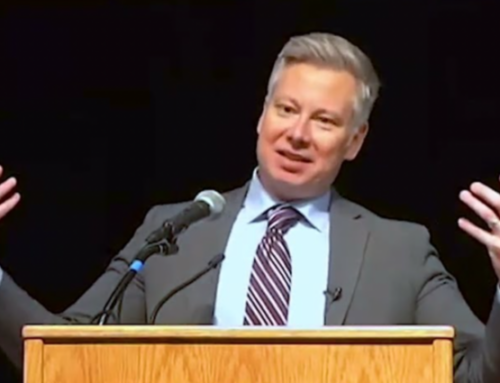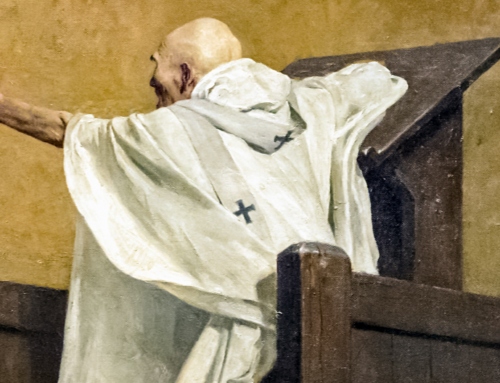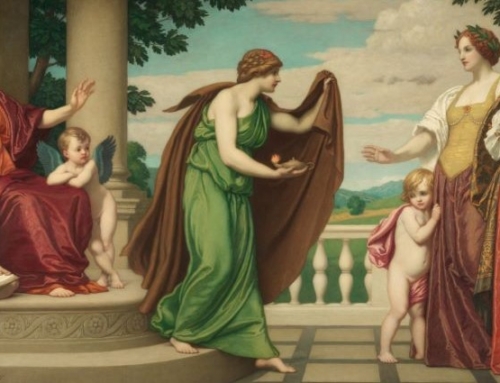Elizabeth Barrett Browning’s poem “The Cry of the Children” recognizes the injustice of the exploitation of child labor, but her protest is not so much against the eternal class struggle as it is against the failures of her culture to remain true to its long-held beliefs. Her poem is thus a call to conserve culture rather than destroy it.
 Coal, the natural resource that powered the Industrial Revolution, was for many years mined by hand in cramped and perilous shafts, oftentimes by women and children, whose wages were cheaper than men and whose bodies were better able to fit into small spaces. An 1842 English Royal Commission investigated the work of children in mines and reported that children as young as five spent twelve-hour days sitting in small tunnels deep in the dark underground, waiting to open or close ventilation doors. Slightly older children and teenagers were employed in dragging and pulling loaded wagons through subterranean passages as narrow as twenty-two inches in height. One seven-year-old boy interviewed for the Report said, “I never see daylight now, except for Sundays” (41). Many children gave accounts of vicious beatings when, either due to lack of strength or sleepiness, they failed to perform their tasks.
Coal, the natural resource that powered the Industrial Revolution, was for many years mined by hand in cramped and perilous shafts, oftentimes by women and children, whose wages were cheaper than men and whose bodies were better able to fit into small spaces. An 1842 English Royal Commission investigated the work of children in mines and reported that children as young as five spent twelve-hour days sitting in small tunnels deep in the dark underground, waiting to open or close ventilation doors. Slightly older children and teenagers were employed in dragging and pulling loaded wagons through subterranean passages as narrow as twenty-two inches in height. One seven-year-old boy interviewed for the Report said, “I never see daylight now, except for Sundays” (41). Many children gave accounts of vicious beatings when, either due to lack of strength or sleepiness, they failed to perform their tasks.
In response to this report, Elizabeth Barrett Browning devoted her poetic efforts to protest the treatment of child laborers. The poem was first published in the conservative (Tory) publication Blackwood’s Edinburgh Magazine in 1843, following a satirical poem, which perhaps influenced the way readers perceived the poem. However, Barrett Browning removed any doubts as to the poem’s place in protest literature when, in her 1844 edition of her collected poems, she placed it alongside “Runaway Slave at Pilgrim’s Point,” a poem she had written at the request of American abolitionists.
Protest literature draws attention to social ills and abuses in order to provoke change or reform, and abolitionists made effective use of it in the years leading up to the American Civil War. But this kind of literature can easily devolve into writing that pays more heed to its social purposes than to any artistic commitments to beauty and truth. Furthermore, protest literature of the first half of the 19th century often relied upon sentimental portrayals of suffering to make emotional appeals to the reader. In the essay “Everybody’s Protest Novel,” James Baldwin criticizes Harriet Beecher Stowe’s Uncle Tom’s Cabin for its “self-righteous, virtuous sentimentality” and argues that the book leaves “unanswered and unnoticed the only important question: what it was, after all, that moved people to such deeds” (14). Because Stowe’s novel wallows in sentiment and fails to answer the moral questions it raises, it fails artistically. Baldwin argues that there is a “power of revelation which is the business of the novelist, the journey toward a more vast reality which must take precedence over all other claims” (15). Indeed, any literature that completely fails to point the reader toward a “more vast reality” due to prioritizing the quest for social change or emotional appeal has slipped over the line between art and propaganda. As Barrett Browning’s “The Cry of the Children” is sentimental protest literature, it is well worth considering whether the poem falls into the same category as Stowe’s novel. Does this poem wallow in emotion, leave the most important moral questions unanswered, and fail to exhibit a revelation of “a more vast reality”? Or does the poem somehow escape the perils of sentimentalism, and answer moral questions precisely by a revelation of a cosmic reality that recalls the social order to its most deeply held theological beliefs?
The title “The Cry of the Children” is drawn from Euripides’ play Medea in which the titular character kills her children in order to get revenge upon their father Jason, who has sought a new wife in a quest for greater power and influence. The poem begins with a question appealing to the audience: “Do ye hear the children weeping, O my brothers, / Ere the sorrow comes with years?” (1-2). The “brothers,” called upon throughout the 160-line poem, are the people with whom the speaker pleads on behalf of the children.
The speaker then continues with sentimental descriptions of the children “leaning their young heads against their mothers” (3), “weeping in the playtime of the others / in the country of the free… in our happy Fatherland” (11-12, 23-24). The children are contrasted with the “young lambs,” “young birds,” “young fawns,” and “young flowers” (5-8), all innocent and lively manifestations of youth within the natural world. But neither are the children like the “old tree,” “old year,” “old wound,” and “old hope” mentioned in the next stanza. Young children ought not to be the way these children are: They are neither young nor old; they are comfortless and bitter.
The image of crying children leaning upon their helpless mothers makes it clear that this is a sentimental poem. Since the early 20th century, the label of sentimentalism has been enough to dismiss any literary work as inartistic or propagandistic. But it was not always a pejorative label. “Sentimental” describes literature that depicts expressions of feelings (or sentiments) for the reader to empathize with. Sometimes, as Baldwin makes clear in his critique of Uncle Tom’s Cabin, these expressions of feelings are excessive and serve only as a self-satisfying emotional bath that leaves readers feeling as though they are virtuous simply for having felt rightly. Such sentimentality fails to take the magnitude of evil seriously, as it allows readers to feel as though suffering and injustice have been addressed, without any real action or change having occurred. Not all sentimentality in literature, however, assures readers of their own virtue and absolves them of the need to act. Sometimes subject matter that produces strong feeling is a galvanizing call to readers to enter sympathetically into the experiences of others, and to act differently based on their revived moral convictions.
In the first stanzas of “The Cry of the Children,” the repeated mention of children and their mothers in a poem addressed to “my brothers” and set in “our happy Fatherland” places the audience in a familial relationship with the weeping children and their powerless mothers. The speaker gives the children a voice, and they say that they long for the grave. After mentioning one of their number—“little Alice”—who has died already, they say “it is good when it happens… That we die before our time” (51-52). Having established that these children are—or ought to be—in the same family as the audience or “my brothers,” the speaker thus shows the audience the depths of their failure to protect these children whose lives are so miserable that they long for death.
The speaker continues the emotional portrayal of child suffering when she exhorts the children to “go out… from the mine and from the city, / Sing out… as the little thrushes do,” and also to go out to the meadows and pluck flowers and laugh (57-60). Again the children speak and again their words show the hopelessness of their lives. They ask if flowers are like the “weeds anear the mine” and ask to be left alone in the dark, not bothered by “your pleasures fair and fine” (62, 64). They go on to say that they could not play in any case, for they are too tired from stooping under their burdens. The children say that they spend all their days driving “the wheels of iron / In the factories” (75-76), and the repetition of this wheel imagery across two stanzas highlights the futile, repetitious labor of these children. Indeed, even their souls “spin on blindly in the dark” (100).
After the children reject the offer of playing in the meadows, the speaker addresses the audience: “Now tell the poor young children; O my brothers, / To look up to Him and pray” and ask for God’s blessing (101-102). But instead of the brothers answering, the children interject: “Who is God that He should hear us, / While the rushing of the iron wheels is stirred?” (105-106). The children note that “the human creatures” who pass them in their work do not hear them or answer them; why should this God be any different?
The children then admit that they know only two words of prayer that they “say softly like a charm” (116). And those two words are simply “Our Father.” This talismanic prayer continues the speaker’s thematic focus upon the family of which these children ought to be a part. They have been cast out of the broader human family into a world predicated upon commodities and labor rather than bonds of love. They cannot imagine a father God. They conclude that this God must not hear them, and instead of being fatherly, “his image is the master / Who commands us to work on” (127-128). The children take on a mocking, antagonistic tone when they say “up in Heaven, / Dark, wheel-like, turning clouds are all we find” (129-130). Knowing only the tyranny of the master and the dark wheels of ceaseless industrial production, the children have created a horrifying image of God as mechanical and sinister. The poem began with the tears of the children, moves through an exploration of their longing for death, and ends with the children declaring that if there is a God, he certainly does not hear their cries, and if he did, he would not care.
This declaration of utter disbelief in both God and justice, combined with the previous longing for death, means that these children have nothing to lose. This is not an exaggeration or excessive portrayal of the dangerous despair of the laboring poor. At the same moment in history that Barrett Browning was writing “The Cry of the Children,” Karl Marx and Friedrich Engels were busy formulating their thoughts regarding the proletariat class to which such children belonged. Communist Manifesto articulates the revolutionary spirit roiling Europe: It begins with the now-famous observation that “the history of all hitherto existing societies is the history of class struggles.” Marx and Engels then argue that in the current struggle the laborers have become a commodity who are forced to sell their labor in a competitive market, and this commodification of their work, and indeed their very bodies, has rendered them desperate. The Manifesto concludes with a call for a complete overthrow of “all existing social conditions” and warns the bourgeoisie that “the proletarians have nothing to lose but their chains.” For Marx and Engels—and many others at this time—the only solution to the proletariat’s miserable situation is a revolution that will turn the tables against those in power in the class struggle.
Although Barrett Browning’s poem recognizes the injustice of the exploitation of child labor, her protest poem is a call for reform rather than revolution. The reformation of society that she proposes is predicated upon a shared belief in a certain kind of God. Her protest is not so much against the eternal class struggle as it is against the failures of her culture to remain true to its long-held beliefs. Her poem is thus a bracing call to conserve culture rather than destroy it. In the lines following the children’s proclamation of this God, this protest poem culminates in a damning question:
Do you hear the children weeping and disproving,
O my brothers what you preach?
For God’s possible is taught by His world’s loving,
And the children doubt of each. (133-136)
The question and answer show that Barret Browning’s poem is far from being the kind of self-indulgent sentimentalism that soothes the reader’s desire to feel virtuous. The children have seen nothing in their lives to make them think it possible that God is loving. The brothers whom the speaker addresses have overtly taught that God is just and loving, but by tolerating the abuse and exploitation of children, they have implicitly taught that there is no God, or if there is, he does not care for the weak or for the poor. The brothers—and by extension the readers—are hypocrites.
The final stanzas reveal the consequences of that hypocrisy. The speaker once again mentions the upturned faces of the crying children, but at the conclusion of the poem these faces are “dread to see” as they convict the reader: “for they mind you of their angels in high places, / With eyes turned on Deity” (151-152). This is an allusion to a sermon of Jesus in the gospel of Matthew when, after setting a child in the midst of his audience, Jesus warns his audience that they cannot enter the kingdom of Heaven unless they become like the child. He warns them, “Take heed that ye despise not one of these little ones; for I say unto you that in Heaven their angels do always behold the face of My Father which is in Heaven” (Matt. 18:10). This injunction follows an earlier warning to the one who “shall offend one of these little ones which believe in Me, it were better for him that a millstone were hung about his neck, and that he were drowned in the depth of the sea” (18:6). The implication of this allusion is clear: The audience is under divine judgment, for they have made it impossible for “these little ones” to have faith in a loving and just God; they have offended against the children whose angels stand before God, who sees and condemns the “gold-heapers” who “tread onward” to the “throne amid the mart” insensible to the blood of children that “splashes upward” (156-157).
The final stanzas of Elizabeth Barrett Browning’s poem do nothing to placate any self-righteousness tendencies in the audience. The sentimentalism of the first part of the poem is aimed at awakening sympathy and conscience. The second part of the poem is deeply theological and convicts the audience of failing to live according to the beliefs they espouse. The audience is not invited to wallow in a warm sense of virtue after being guided toward right feeling in “The Cry of the Children”; rather, the sentimentalism of the poem leads to a damning indictment of a culture that has strayed from its fundamental principles when it despises children and loves profit.
Thus, having escaped the trap of self-indulgent sentimentalism, the poem manages to avoid becoming the kind of facile protest literature that James Baldwin critiques. But it is not revolutionary. It is a convicting call to return to long-held beliefs. The poem begins in the small sphere of crying children and helpless mothers, but by its conclusion it opens out into a vision of a cosmic reality that overturns the ruthless human power structures based on economic class and political strength. In setting a child in the midst of his listeners, Jesus declared a kingdom unlike the principalities and dominions of the world—one not based on power but on humility. In setting before her readers the image of the crying child laborers, Barrett Browning calls for culture to re-form itself around the teachings of the New Testament. Hers is a call to remember that the powerful have already been “subverted” by the Gospel which declared the fallen world and all its greed, aggression, selfishness and cruelty to be at odds with kingdom of Heaven whose proper citizens are truly children.
This essay was first published here in June 2021.
The Imaginative Conservative applies the principle of appreciation to the discussion of culture and politics—we approach dialogue with magnanimity rather than with mere civility. Will you help us remain a refreshing oasis in the increasingly contentious arena of modern discourse? Please consider donating now.
Works Cited
Baldwin, James. “Everybody’s Protest Novel.” Notes of a Native Son, 1955. Beacon Press, 1984, 13-23.
Barret Browning, Elizabeth. “The Cry of the Children” The Norton Anthology of English Literature: The Victorian Age, edited by Stephen Greenblatt and M.H. Abrams, Norton, 2006, pp. 1079-1082.
Great Britain, Parliament. Royal Commission on Children’s Employment in Mines and Factories, The First Report of Commissioners for inquiring into the Employment and Condition of Children in Mines and Manufactories. London, 1842.
The Bible. Authorized King James Version, Cambridge UP.
Marx, Karl and Friedrich Engels. Communist Manifesto, Translated by Samuel Moore, 1888, Penguin Books, 2002.
The featured image is courtesy of Pixabay.







Well said.
Regarding the Still Potent ‘Cry of the Children’. Most 19th century readers knew the Bible. Thus more knew ofGod’s call to justice.
Such as Jesus’ stern warnings about child abuse ( the millstone conversation).
Barrett-Browning’s Cry of the Children could today apply to the HUGE human trafficking in the US…and the world. And near where you and I live.
But even tho Uncle Tom’s Cabin oozes excess sentimentality, (yes I read it) I note that it was a good work for its time. It got people motivated to fight slavery.
As Pres. Abraham Lincoln acknowledged when meeting author Harriet Beecher Stowe.